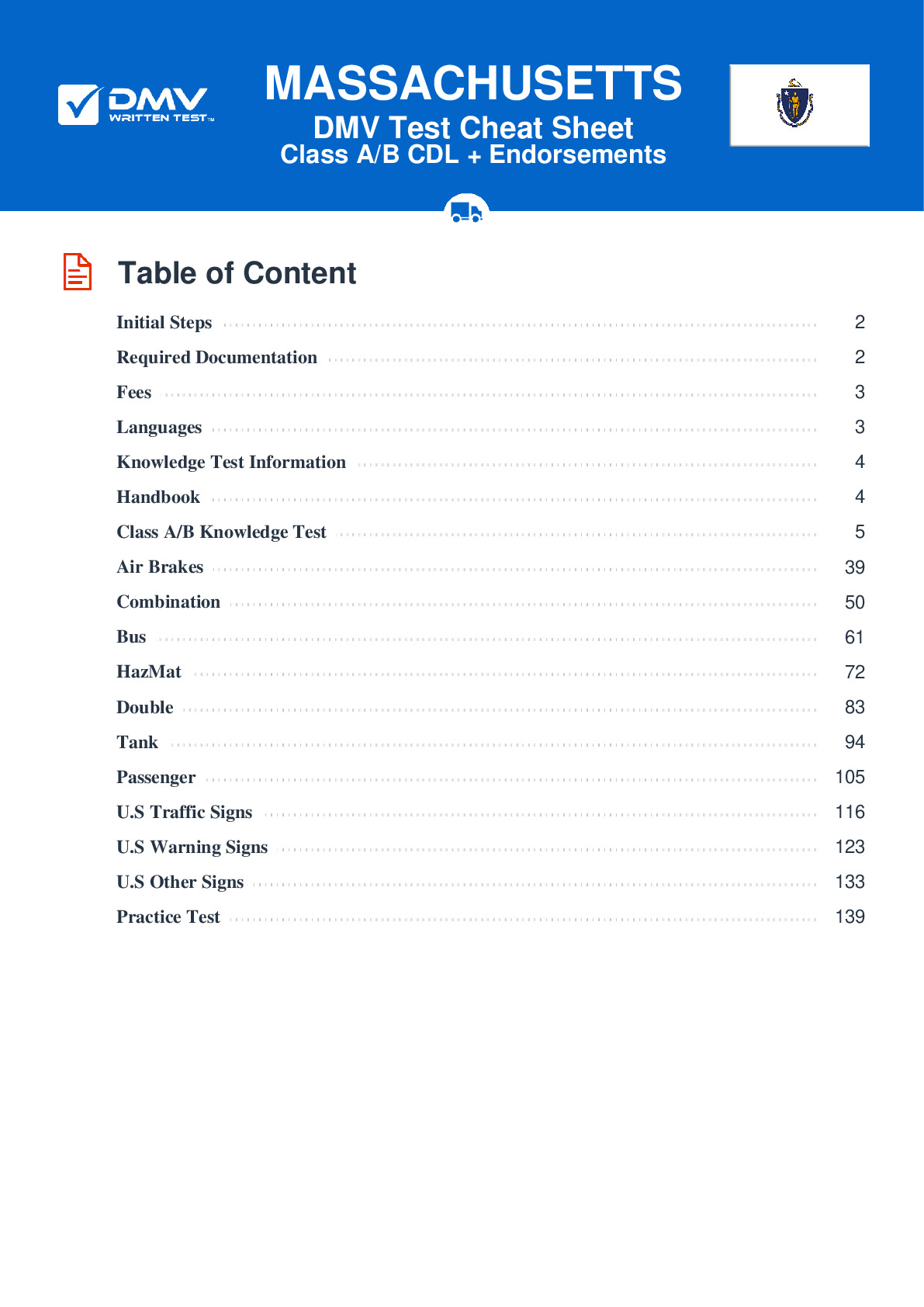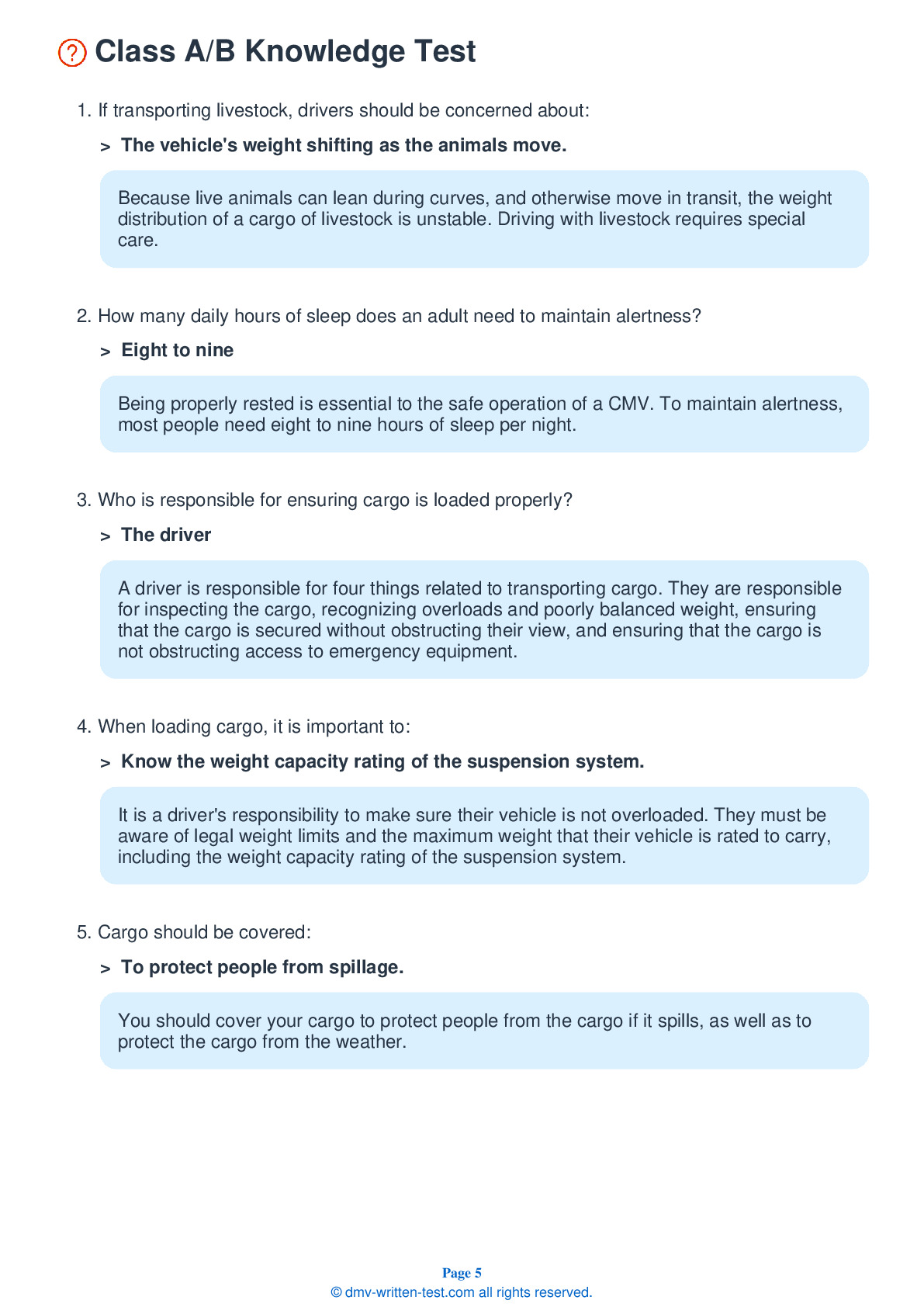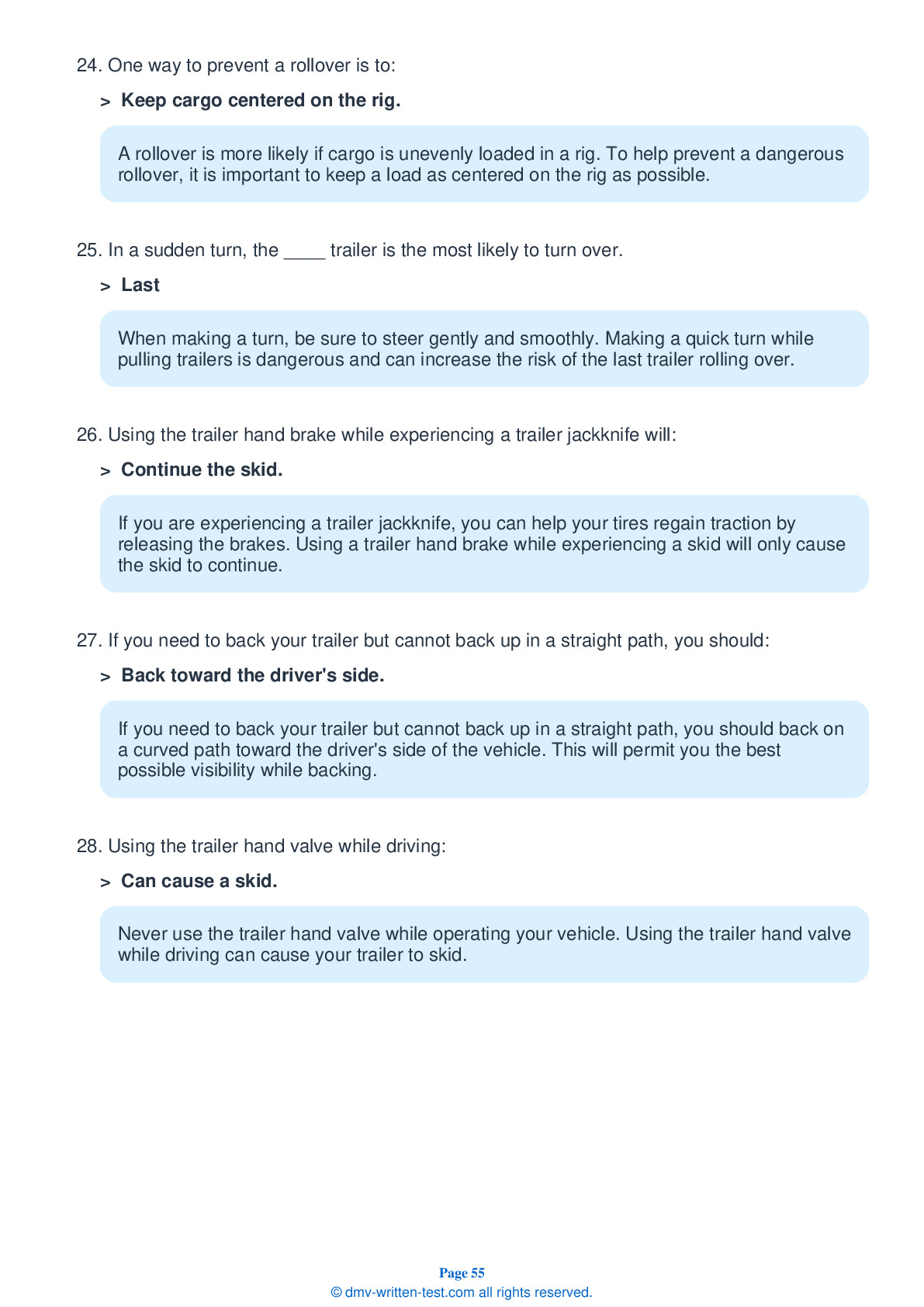Combination
All applicants who are applying for a Class A CDL should be prepared to take the Combination test. This test covers information found in Section 6 of the Commercial Driver License Manual. Section 6 provides the information needed to safely operate tractor-trailers, doubles, triples, and straight trucks with trailers. The test is made up of 20 multiple-choice questions, and applicants will need to correctly answer a minimum of 16 questions to pass. The Combination test is not a replacement for the Double/Triple endorsement test.
Number of Question
Passing Score
1. If a trailer begins to jackknife, you should not:
Explanation
If a trailer begins to jackknife, you should release the brakes and allow the trailer wheels to regain traction with the road. Do not apply the trailer hand brake to attempt to straighten out the rig because it will only prolong the skid. The application of brakes is what caused the wheels to lock in the first place.
2. Simply changing lanes can cause:
Explanation
Due to the "crack-the-whip" effect caused by rearward amplification, changing lanes too quickly in a combination vehicle can result in a rollover.
3. How many air lines does a combination vehicle have?
Explanation
Every combination vehicle has two air lines: the service line and the emergency line.
4. A lightly-loaded combination vehicle will stop more slowly than a fully-loaded vehicle because:
Explanation
An empty combination vehicle will come to a complete stop more slowly than a fully-loaded vehicle. The stiff suspension springs and strong brakes will have lower traction on a light trailer than they would if the vehicle carried more weight.
5. Driving a combination vehicle ____ than driving a single vehicle.
Explanation
Driving a combination vehicle usually requires more skill than driving a single vehicle. Combination vehicles are generally longer and heavier than single commercial vehicles.
6. To help prevent a rollover, cargo should be:
Explanation
To reduce the risk of a rollover, the weight of cargo in a trailer should be kept as low to the ground as possible. Weight should not be placed primarily on one side of the trailer as this could make the trailer lean, increasing the risk of a rollover.
7. Trailers with low underneath clearance may be difficult to drive:
Explanation




